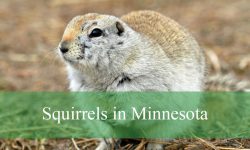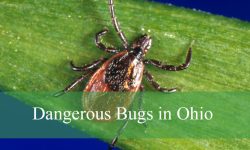Brown Recluse Spider and Grass Spider are two distinct species of spiders, each with unique characteristics. In this article, we will learn and compare the similarities and differences between these two types of spiders.
What is a brown recluse spider look like?

The term “brown recluse spider” typically refers to the species Loxosceles reclusa, which is known for its venomous bite and distinctive violin-shaped marking on its cephalothorax. While there are various species within the genus Loxosceles, the most commonly known one is the Loxosceles reclusa, often simply referred to as the brown recluse spider.
Eight eyes are found on most spiders. The legs of the brown recluse spiders are evenly pigmented and lack spines. They range in color from pale tan to brown. Female bodies have leg spans exceeding 25 millimeters (1 inch) and range in size from 10 to 15 millimeters (about 1/4 to 1/2 inch). Generally speaking, men are half the size of women.
What is a grass spider look like?

A grass spider typically has a long and slender body, with a varying coloration that can range from brown to gray. These spiders often exhibit darker stripes or markings on their bodies. They have two body segments: the cephalothorax, which is the fused head and thorax, and the abdomen. Grass spiders also possess eight long and slender legs, which they use for movement and for capturing prey. Their appearance allows them to blend effectively into their natural habitat, particularly in grassy areas and low-lying vegetation where they construct their characteristic funnel-shaped webs.
Similarities between the brown recluse spider and the grass spider
1. Habitat: Both the Brown Recluse and Grass Spiders prefer quiet, undisturbed areas such as sheds, garages, and piles of debris. They can also be found in gardens, forests, and grassy areas.
2. Behavior: Both species are known to be shy and non-aggressive. They typically try to avoid human contact and will only bite when they feel threatened.
3. Bite symptoms: The bites of both spiders can result in similar symptoms, such as redness, itching, pain, and sometimes blistering or necrosis in severe cases. Both types of bites can require medical attention if they lead to significant reactions.
Differences between the brown recluse spider and the grass spider
1. Appearance: Brown Recluse Spiders have a characteristic violin-shaped marking on their cephalothorax, which can help in identification. Grass Spiders, on the other hand, have long, slender bodies and are typically brown or gray with darker stripes.
2. Venom potency: The venom of the Brown Recluse Spider is more potent and can cause necrotic lesions, whereas the Grass Spider’s venom is relatively less harmful to humans and primarily serves to immobilize its prey.
3. Web-building: Grass Spiders are known for their intricate, sheet-like, funnel-shaped webs that they build in tall grass or low-lying shrubs, whereas Brown Recluse Spiders do not build elaborate webs and are more commonly found in secluded locations.
4. Geographic distribution: Brown Recluse Spiders are primarily found in the central Midwestern and southern states of the United States. Grass Spiders, however, have a wider distribution and can be found in various regions, including North America, Europe, and Asia.
With these insights, you can now better understand and differentiate between these two spider species in their natural habitats. It is crucial to exercise caution and appropriate preventive measures when encountering any type of spider.
Effective preventive measures against brown recluse spiders and grass spiders?
Effective preventive measures can significantly reduce the likelihood of encounters with the brown recluse spider and the grass spider. Maintaining a clutter-free environment is crucial, as these spiders tend to seek out undisturbed areas. Sealing any cracks and crevices in walls and foundations can prevent their entry into homes and other structures.
Additionally, implementing regular pest control measures, both indoors and outdoors, can help keep their populations in check, thereby minimizing the chances of encountering them. It’s essential to remain vigilant and proactive in implementing these preventive measures to create an environment less conducive to the presence of these spiders.
People Who Read This Also Read:
- Types of Wolf Spiders in California
- Types of Poisonous Spiders in California
- 15 Spiders That Play Dead
- 15 Spiders That Look Like Scorpions (But They Aren’t)
- 20 Spiders That Look Like Crabs (But They Aren’t)
- 15 Spiders That Look Like Ants (But They Aren’t)
- 15 Spiders That Look Like Black Widows (But They Aren’t)






